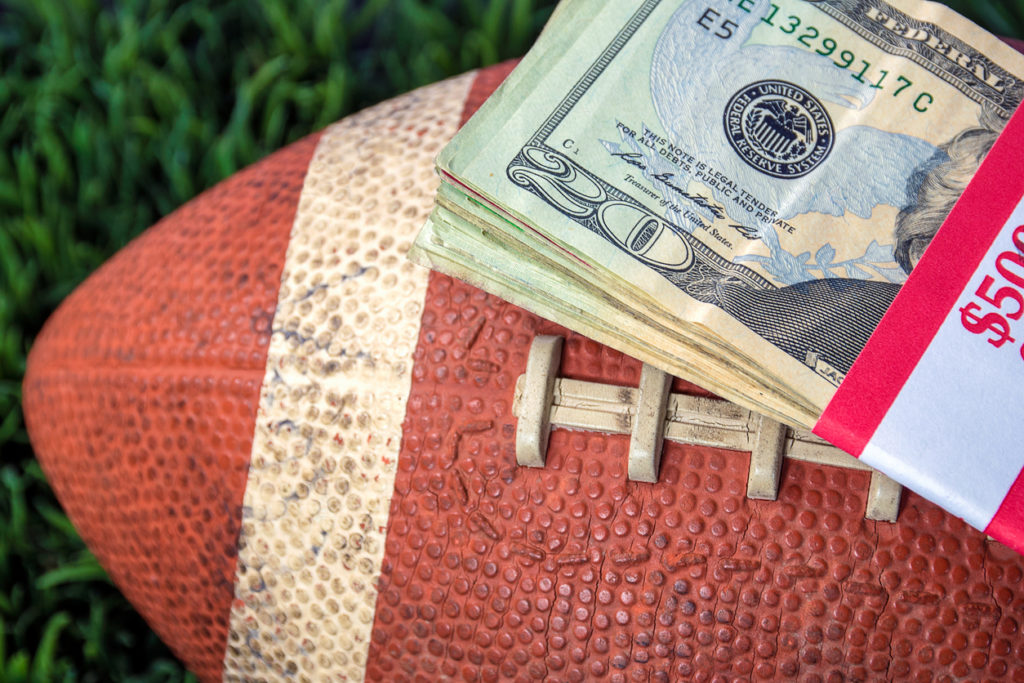
It’s that time of year again…football season! A new football seasons means it is time for the much anticipated TSP Futures report…breaking down the NFL and NCAAF win totals and division/conference/championship futures. The question then immediately becomes…how much should you wager on futures as a portion of your total sports betting bankroll?
First, and I won’t dive too deep into this here (I’ll save it for another article), I advise most bettors to use a 100 unit bankroll. Yes, there are all sorts of bankroll management theories and calculations out there like the Kelly Criterion. However, most gamblers don’t have the patience nor desire to get complicated when it comes to bankroll management. Hell, most gamblers don’t even use basic bankroll management. For many gamblers, their bankroll management plan is simply…I have $3,000 in the bank, that’s means I can bet $1,000 per game or even $3,000 if I see something I really like. Crazy…yes…but it happens daily!
The 100 unit bankroll is a old theory. The idea is grounded in some statistics which say that a typical gambler, betting multiple wagers on a daily basis, who plays with an advantage, will have a 20-30 unit drawdown at least once, if not twice, per year. Yes, someone playing “WITH AN ADVANTAGE” (meaning a sharp bettor) will still experience that large of a drawdown…once, if not twice…per year. As such, you want to be able to have a bankroll that will allow you to weather those storms and still have plenty of cash in reserve to keep grinding. As such…100 units would do the trick mathematically. If you are not playing with an advantage then theoretically no bankroll is large enough because over time you will just keep bleeding money until it is all gone (i.e. most gamblers). It’s the same theory as playing a slot machine. You might find a slot machine with a “99% payout rate”, but that still means every spin of the wheels you are losing 1% of your money. The 1% every spin adds up and that’s how you find yourself at $0 in no time.
Next, what does 100 units mean? What even is “a unit”? It means you take whatever money you set aside as your gambling bankroll…$1,000, $10,000, $1,000,000, whatever that amount might be, and divide by 100. The result of that equation is your per unit wager. So, if you have $1,000 that you set aside to undertake your gambling adventure, your per unit wager is $10 ($1000/100=$10).
With the bankroll portion established, how much of those 100 units should you dedicate to futures. Well, let’s use statistics and say we could see a potential drawdown of 30 units to our bankroll during a cold run. As such, that would leave us with 70 units if the cold run began as soon as we started betting (i.e. we didn’t bank 1 unit of profit before the cold run hit). Sure, that’s unlikely, but not impossible so we have to account for it. So, we can’t spend 70 units on futures. We also want to make sure we have at least 60 units to continue betting after a cold run hits. If our goal is to make back the 30 units of bankroll we could potentially have lost in the drawdown, we don’t want to be sitting with just 15 units of bankroll to do it. My goal would be to have at least double that amount that I lost sitting in reserve to get grinding back. So…100 unit bankroll minus 30 unit drawdown leaves 70 units, but I want at least 60 units (double my 30 unit drawdown) in reserve to grind my 30 units of loss back. So, that leaves us with 10 units of bankroll.
Yes, 10% of our overall bankroll is 10 units and that is the MAXIMUM I would want to have tied up in pending futures wagers. Now, there are some bettors who ONLY bet futures. In this case your bankroll requirements are not the same. You would dedicate a much larger portion (roughly 25-30%) to active/pending futures since that’s all you bet. However, for the typical gambler who bets events daily and wants to have a futures portfolio on the side as well, I would say to have no more than 10% or 10 units of your bankroll tied up in pending futures action (win totals, Championship, Conference, Division, etc. futures).
The 10%/10 units allows you plenty of action, because most futures you are likely wagering on are paying 5 to 1 or better. So, if those futures work out, even one or two, the return on investment depending on how you spread out that 10% can be very large (look at UConn +1800 or Denver +750 in the NBA). At the same time, if the futures do not work out, you still have 90% of your bankroll available for daily betting to grind those funds back! I also bet futures for varying amounts like 0.3, 0.5, 1 units and sometimes even up to 2 units (rare). Most of my action though is 1 unit or smaller. I bring this up because I don’t want you to think 10% or 10 units means you get 10 futures bets at 1 unit each. You can split the 10 units up in all different sizes that work based on your strategy. Maybe you have 90 bets at 0.1 units and 1 bet at 1 unit. Weird, but it works!
I hope this helps you attack the football season and the futures wagering in the months and years ahead! As always I am here for your questions (click here). Good luck this football season and let’s cash some more futures tickets!!
